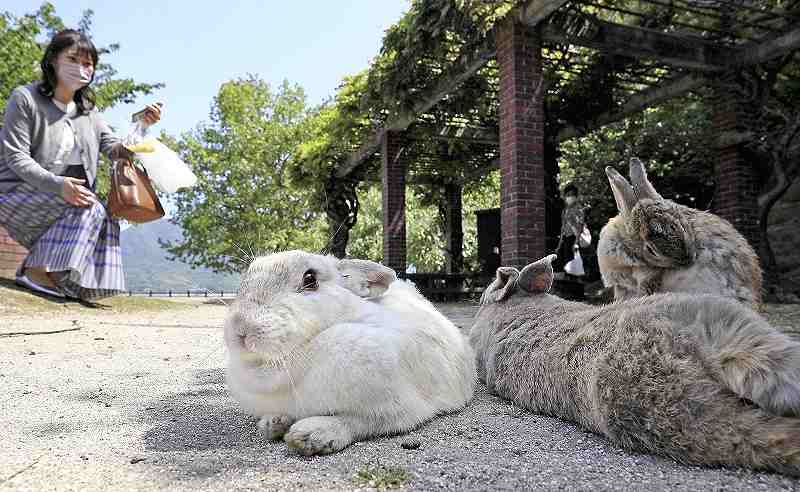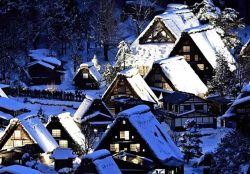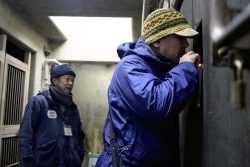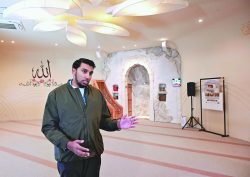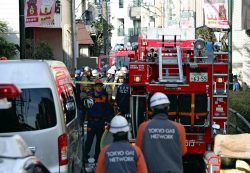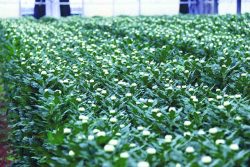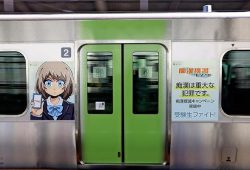
Photographer couple Maya Nakamura, left, and Takayuki Nakamura watch rabbits on Okunoshima Island in Takehara, Hiroshima Prefecture.
12:00 JST, March 25, 2023
TAKEHARA, Hiroshima — Okunoshima Island in the Seto Inland Sea is widely known as “rabbit island,” home to about 500 rabbits living in an area rich with nature. To see these adorable animals, many tourists board a ferry to visit the small island that has a circumference of 4 kilometers in Takehara, Hiroshima Prefecture.
Since this year is the Year of the Rabbit, locals are trying even harder than usual to promote the island’s appeal.
“Their expressions, gestures and everything about them is cute and lovely,” said Takayuki Nakamura, 47, who lives in Kumamoto Prefecture, as he directed a camera toward brown rabbits in a square near the Kyukamura Okunoshima hotel, the island’s sole lodging. Smiling next to him was his wife, Maya, 44.
Before they married in 2000, the couple came to the island on holidays and became captivated by the rabbits. Takayuki hails from Mihara, which is adjacent to Takehara. He quit his company job. Now the couple work together as photographers that mainly specialize in pet rabbits.
The island is a special place for the pair. They visit the island almost every month and take pictures of the rabbits early in the morning and around sunset when the bunnies are most active, trying to capture the best moments to show how the furry animals are living their life to the fullest.
Sometimes they come across rabbits fighting over territories, making nests or suckling their young. Whenever the two go to the island, they find something new about the furry creatures. They also discern individual rabbits, name them and warmheartedly watch over them.
There were many other visitors on the February day.
“It is fun when the bunnies come near me and sniff,” said a 9-year-old boy from Hyogo Prefecture.
Poison gases
Why did Okunoshima become a rabbit-friendly island?
The island used to have other monikers: “Poison gas island” and “the island erased from maps.”
Before and during World War II, it was hidden from the public because the island hosted a factory where the Imperial Japanese Army produced toxic gases. There are still ruins of former gas storage units and other related facilities, as well as a museum that tells the history to this day.
After the war, the island was designated in 1950 as part of a national park. The Kyukamura hotel opened in 1963 for school trips and school circles. No one lives on the island except employees of the hotel, and most of the island is under the management of the Environment Ministry.
The rabbits on the island are believed to be European rabbits that were kept outside the island. After being brought to the island around 1970, they rapidly multiplied. From 2011, their presence became widely known through social media posts by international tourists visiting Japan. In the peak year of 2017, more than 400,000 people visited the island.
Joint efforts
Locals are working hard to revitalize tourism on the island and the surrounding areas to recover from the pandemic.
Students of Takehara High School joined together with the city government to make a calendar using photos of the rabbits.
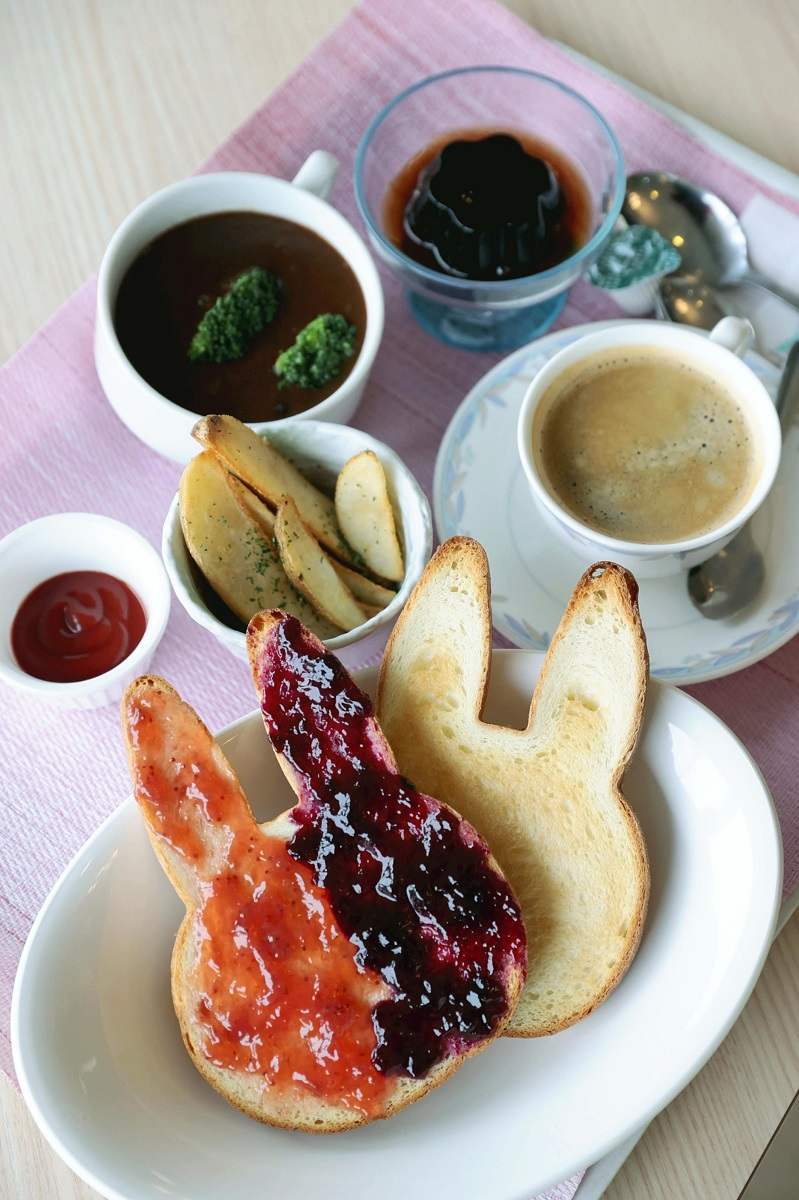
The lunch set with rabbit-shaped bread at the Kyukamura Okunoshima hotel
“Please come to the island and watch rabbits in seasonal landscapes — hydrangeas in June, fallen leaves in the autumn, and the like,” said Naru Hotehama, 17, a second-year student at the school.
The coffee shop of the Kyukamura hotel has begun serving a weekday-only lunch set with rabbit-shaped slices of white bread.
“A trip here starts with a welcome by cute bunnies. There are also grand views of the Seto Inland Sea and its islands, and you can also go fishing or stroll about,” said the hotel’s manager, Hideo Ito. “I hope visitors will enjoy their stay at this rabbit island resort.”
Before the pandemic, the number of tourists coming to the island surged and a great deal of food they brought for the rabbits caused adverse effects to the environment and a health hazard for the rabbits.
Reflecting on this, the Environment Ministry, the Takehara municipal government and local residents worked together to think up solutions — for example, they encourage people to take home the food that the rabbits do not eat — so that the coexistence of many tourists and adorable rabbits can continue into the future.
Extend your trip!
Preservation District
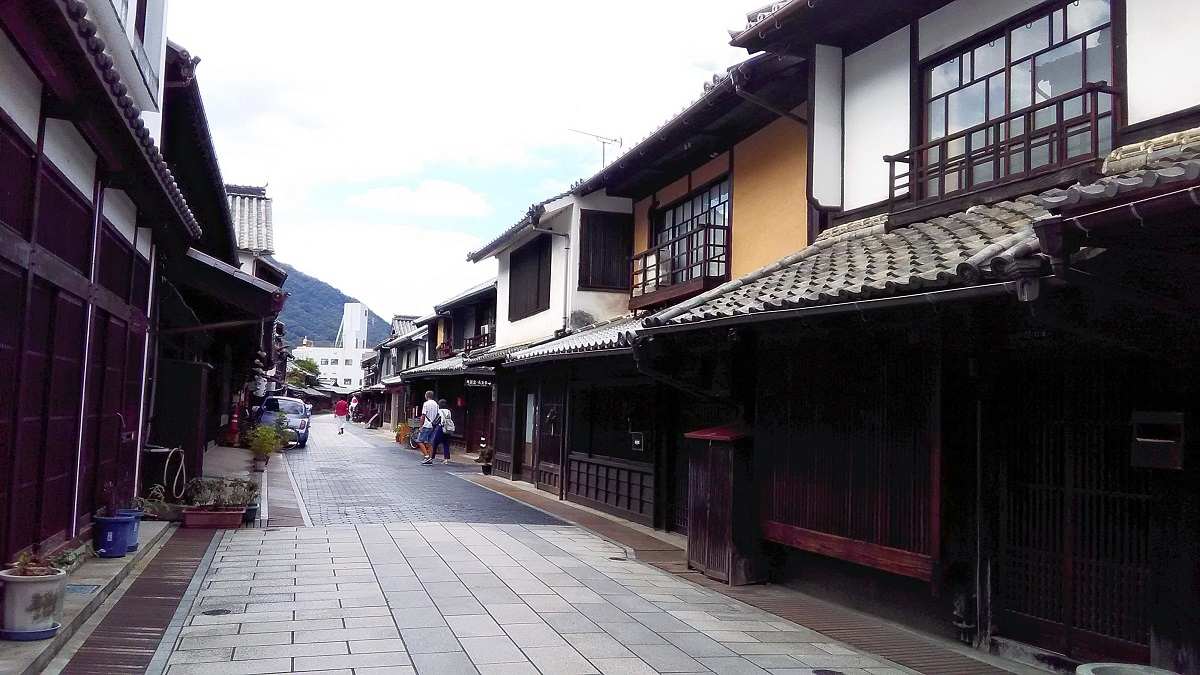
A street in the area of Important Preservation District for Groups of Traditional Buildings in Takehara
An old town in central Takehara was designated by the government as an Important Preservation District for Groups of Traditional Buildings in 1982. The approximately 5-hectare area, which used to flourish due to the production of salt and sake, retains an atmosphere redolent of the 17th-18th century. The district fascinates tourists with characteristic decor on merchants’ houses and mansions, such as paneling that look like paper cutouts and heart-shaped woodwork.
How to get there
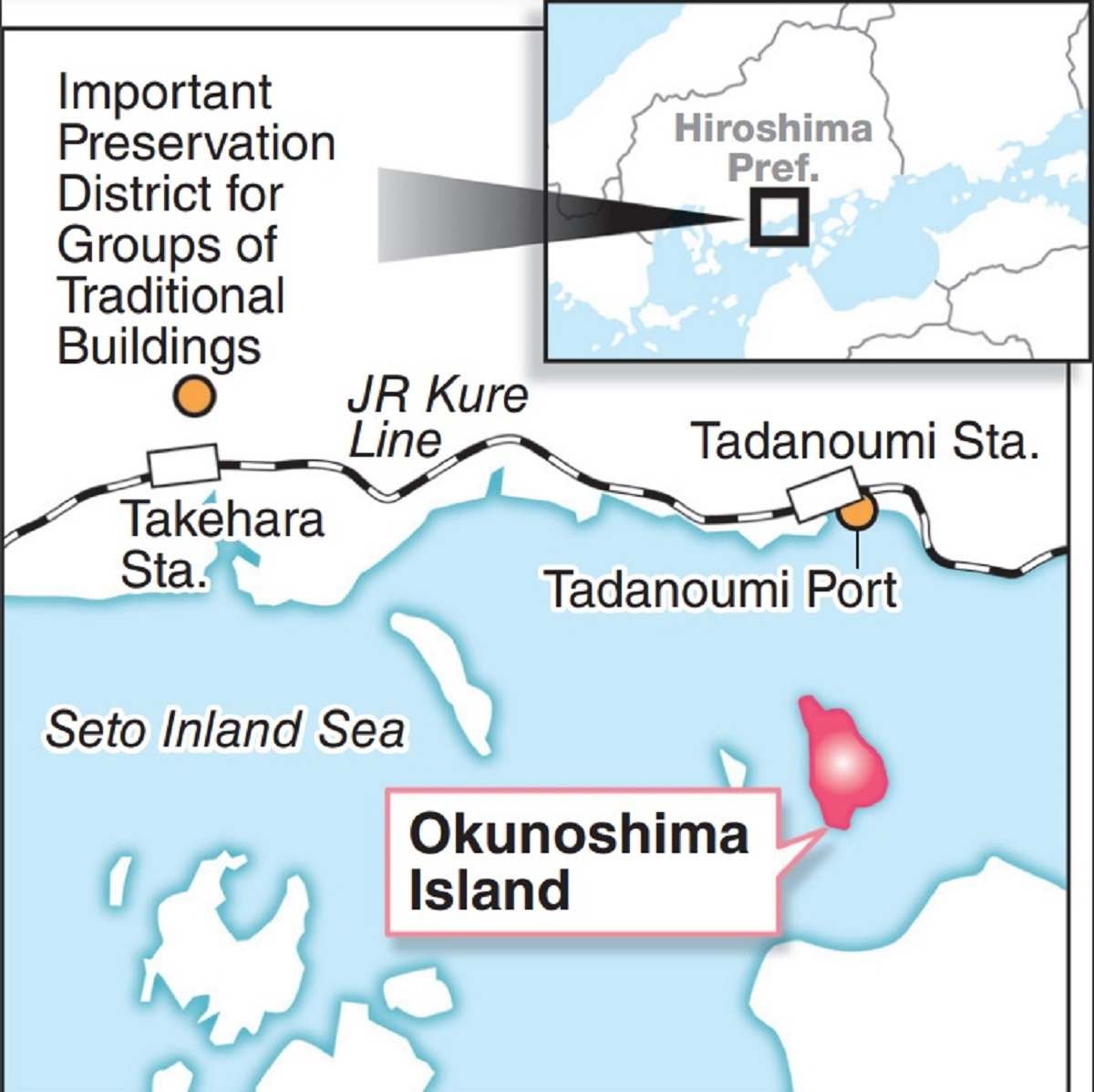
The island is located about 3 kilometers from Tadanoumi Port in Takehara. It takes about 15 minutes to reach the island on the Omishima Ferry or the Kyukamura hotel’s boat. One to two vessel services are available every hour during the daytime. The Tadanoumi Port is about a five-minute walk from Tadanoumi Station on the JR Kure Line. The train station closest to the preservation district is Takehara Station on the same line, which is the third stop from Tadanoumi Station.
Related Tags
"Features" POPULAR ARTICLE
-

Students Recreate 19th-Century Bento Boxes Made for Ino Tadataka’s Survey Team in Hot Spring Town on Nakasendo Road
-

Santa Claus Delivers Christmas Presents to Penguins at Aquarium in Japan’s Nagasaki Prefecture
-

Sumo Restaurant in Tokyo Teaches Foreign Visitors About the Ancient Sport, with Bouts Between Retired Rikishi
-

Autonomous Passenger Ship Connects Mainland with Remote Island in Seto Inland Sea; World’s 1st Commercially Operated Autonomous Vessel
-

Japanese Chef of Italian Restaurant in Tokyo Offers Milanese Risotto; Bright Colors, Rich Flavors in Simple Steps
JN ACCESS RANKING
-

BOJ Gov. Ueda: Highly Likely Mechanism for Rising Wages, Prices Will Be Maintained
-

Japan Govt Adopts Measures to Curb Mega Solar Power Plant Projects Amid Environmental Concerns
-

Core Inflation in Tokyo Slows in December but Stays above BOJ Target
-

Osaka-Kansai Expo’s Economic Impact Estimated at ¥3.6 Trillion, Takes Actual Visitor Numbers into Account
-

Major Japan Firms’ Average Winter Bonus Tops ¥1 Mil.
